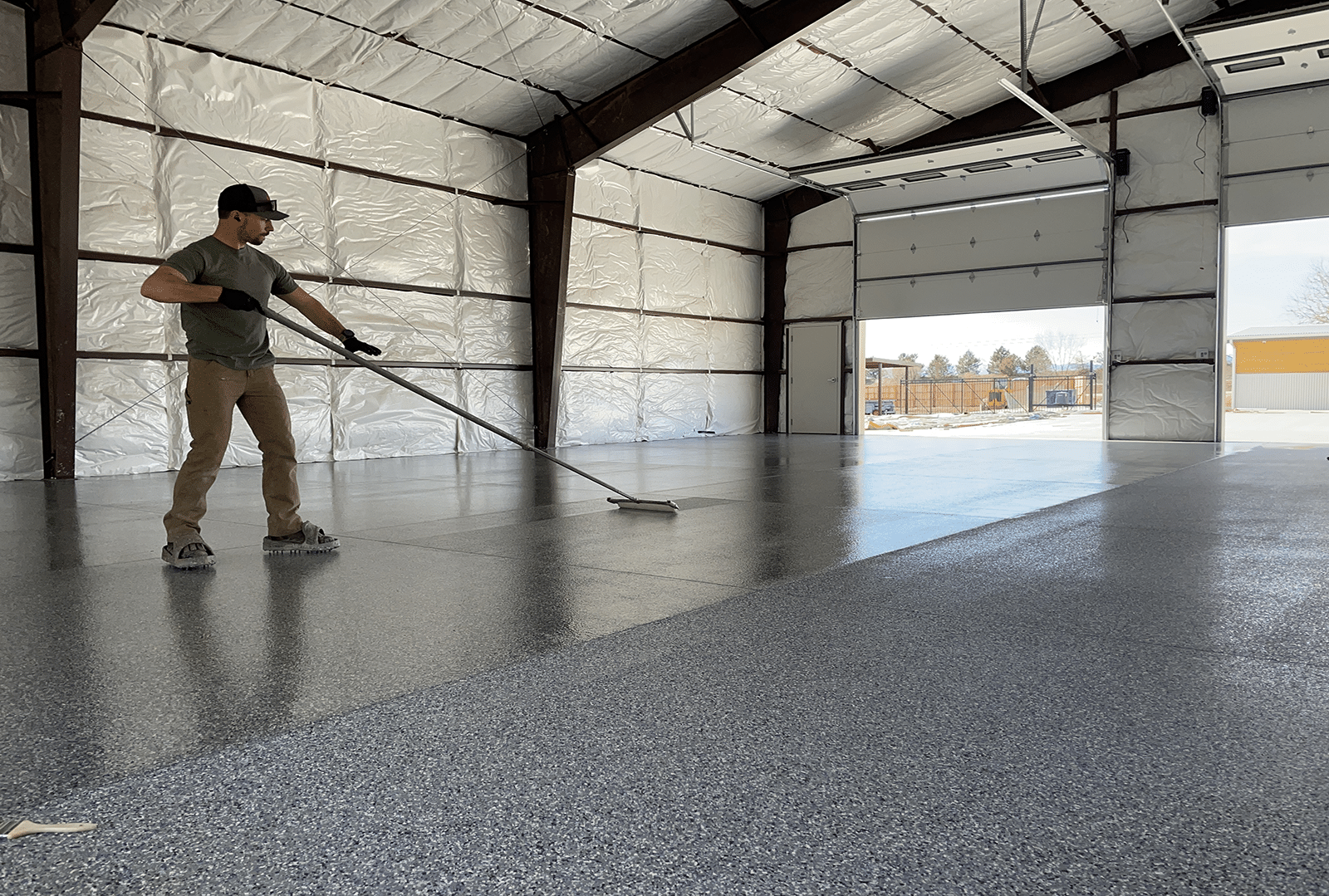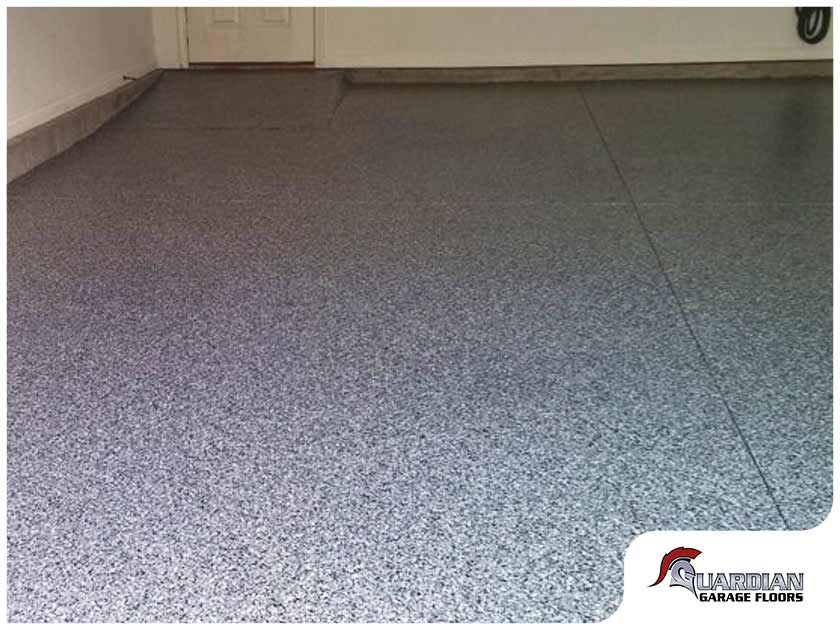To clean a polyaspartic garage floor, sweep it first, then mop with a mild detergent. Ensure it dries completely.
Maintaining a clean and shiny polyaspartic garage floor is simpler than you might think. Polyaspartic coatings, known for their durability and resistance to stains, require straightforward care to keep them looking their best. This type of flooring is a popular choice for garage spaces because it withstands harsh conditions, including heavy traffic and spills.
Keeping your garage floor in top condition not only enhances the appearance of your space but also extends the life of the floor. Regular cleaning with the right products and techniques ensures your polyaspartic floor remains in excellent condition, making your garage a cleaner, more inviting place.
Introduction To Polyaspartic Garage Floors
Polyaspartic coatings transform garage floors. They offer durability and beauty. Unlike epoxy, polyaspartic coatings cure fast. This allows quick return to service. Ideal for those needing a long-lasting solution.
Benefits Of Choosing Polyaspartic Coating
- Quick curing time: Resume garage use faster.
- UV stable: No yellowing over time.
- Resistant: Stands up to chemicals and stains.
- Versatile: Works in varied temperatures.
- Low maintenance: Easy to keep clean.
Maintenance Needs For Longevity
Regular cleaning maintains polyaspartic floors. Use mild cleaners and a mop. Avoid abrasive tools. Wipe spills quickly. A simple maintenance routine extends floor life.

Credit: epoxycolorado.com
Pre-cleaning Preparations
Before diving into the cleaning process, proper preparation is key. A well-prepared approach ensures an effective and safe clean for your polyaspartic garage floor. Let’s explore the essential steps to get started.
Gathering Essential Cleaning Supplies
Equip yourself with the right tools for a hassle-free cleaning experience:
- Broom or leaf blower to remove loose debris
- Mop and bucket for wet cleaning
- Mild detergent or floor cleaner designed for polyaspartic surfaces
- Soft-bristle brush to tackle stubborn dirt
- Microfiber cloths for drying and polishing
Safety Measures Before Starting
Protect yourself and your space with these safety tips:
- Wear non-slip shoes to prevent falls
- Use gloves to shield hands from cleaners
- Ensure good ventilation to avoid inhaling fumes
- Keep children and pets away from the area
With these preparations, you’re ready to begin cleaning your polyaspartic garage floor. Follow these steps for a spotless finish.
Initial Floor Inspection
Before giving your polyaspartic garage floor a thorough clean, start with a proper inspection. This initial step is crucial for maintaining the floor’s condition and appearance. It allows you to tailor your cleaning method to the floor’s current state. Let’s dive into the inspection process.
Identifying Stains And Damage
Scan the floor for any stains or signs of damage. Look for discolorations, cracks, or chips. Oil stains, tire marks, and chemical spills are common in garages. Note these areas as they may require special treatment. Addressing these issues early prevents further damage.
Surface Dust And Debris Removal
Begin by removing loose surface dust and debris. A simple sweep can make a big difference. Use a soft-bristle broom or a dust mop to avoid scratching the coating. This step prepares the floor for a more detailed clean.
Sweeping And Dry Mopping
Maintaining a polyaspartic garage floor involves routine cleaning. Sweeping and dry mopping are vital first steps. These methods remove dust, dirt, and debris. This keeps the floor looking new and shiny. Let’s explore the best ways to sweep and dry mop your polyaspartic garage floor.
Best Practices For Sweeping
- Choose the right broom: Use a soft-bristled broom. It prevents scratches on the floor.
- Sweep regularly: Make it a habit to sweep daily. This avoids dirt buildup.
- Corner brushes: Use them to reach tight spots. They help clean every corner.
Starting with the right tools makes sweeping effective. A daily sweep keeps the floor in top shape. Don’t forget the corners and edges!
Dry Mopping Techniques
Dry mopping picks up what sweeping leaves behind. It uses static to attract dust. Here’s how to do it right:
- Pick a microfiber mop: It’s best for polyaspartic floors.
- Glide gently: Move the mop in smooth, even strokes. This ensures thorough cleaning.
- Change pads often: Switch to a clean pad when dirty. This prevents spreading the dirt.
Dry mopping after sweeping captures the finest particles. It leaves your floor spotless. Remember, a clean pad is crucial for an effective clean.
Wet Cleaning Process
Keeping a polyaspartic garage floor clean ensures its longevity and shine. The wet cleaning process offers a deep cleanse, removing dirt and stains effectively. Let’s dive into the steps and strategies for wet cleaning your polyaspartic floor.
Choosing The Right Cleaning Solutions
Selecting the appropriate cleaning solution is crucial for polyaspartic floors. Not all cleaners are safe. Here’s a simple guide:
- Mild soap works best for general cleaning.
- Avoid harsh chemicals like acetone that can damage the floor.
- For tough stains, use a polyaspartic-specific cleaner.
Always test the cleaner on a small, hidden area first.
Mopping Strategy For Polyaspartic Floors
Mopping plays a key role in the wet cleaning process. Follow these steps:
- Start by sweeping the floor to remove loose dirt.
- Fill a bucket with warm water and a suitable cleaner.
- Use a microfiber mop for effective cleaning.
- Mop in sections and rinse the mop frequently.
- Finish by rinsing the floor with clean water.
Allow the floor to dry completely before walking on it.
Dealing With Stubborn Stains
Garage floors face tough stains, but polyaspartic coatings make cleaning easier. From oil to chemical spills, each stain has a solution. This guide tackles those stubborn marks head-on.
Specific Treatment For Oil And Grease
Oil and grease can leave persistent stains. Here’s how to clean them:
- Apply a degreaser to the affected area.
- Let it sit for 15 minutes.
- Scrub with a nylon brush.
- Rinse with hot water.
For deep stains, repeat the process. A clean floor is within reach.
Addressing Chemical Spills And Marks
Chemicals can leave unsightly marks. Act fast with these steps:
- Blot the spill immediately; don’t rub.
- Mix a solution of water and mild detergent.
- Apply to the spill, and let it soak.
- Scrub gently with a soft brush.
- Wipe clean with a damp cloth.
Persistent marks may need multiple treatments. Patience pays off with a spotless finish.
Rinsing And Drying The Floor
Cleaning your polyaspartic garage floor is simple. Key steps include rinsing and drying. Proper technique ensures a spotless surface. Let’s explore effective ways to rinse and dry your floor.
Effective Rinsing Methods
Rinsing your garage floor shouldn’t be hard. Use the right tools for a clean rinse. Here’s how:
- Use a garden hose: A hose with a high-pressure nozzle works best.
- Mop: For indoor rinsing, a wet mop can help.
- Squeegee: Push water towards the garage exit.
Remember to start from the back. Rinse towards the door. This prevents dirty water from spreading.
Ensuring A Dry And Streak-free Finish
Drying your floor properly is crucial. Avoid water spots and streaks. Follow these tips:
- Use a foam squeegee: It removes water without scratching the floor.
- Towel dry: Microfiber towels absorb water well. They leave the surface dry and clean.
- Air movement: A fan can speed up drying. Point it at the floor for quick results.
Make sure the floor is completely dry. Check corners and edges. These areas often stay wet.
Regular Maintenance Tips
Polyaspartic garage floors are known for their durability and long-lasting shine. To maintain these qualities, regular upkeep is essential. The following tips ensure your floor stays in top condition.
Daily And Weekly Care Routine
Maintaining a clean polyaspartic floor involves simple steps. These steps help preserve the floor’s integrity and appearance.
- Daily sweeping: Remove dirt and debris to prevent scratches.
- Weekly mopping: Use a microfiber mop and mild cleaner for deeper cleaning.
- Spot cleaning: Tackle spills immediately to avoid stains.
Preventive Measures To Avoid Damage
Preventing damage is key to extending the life of your polyaspartic flooring. Follow these preventive measures:
| Preventive Measure | Benefit |
|---|---|
| Use floor mats: | Minimize wear in high-traffic areas. |
| Avoid harsh chemicals: | Preserve the floor’s finish and color. |
| Place pads under heavy equipment: | Prevent indentations and scratches. |
Troubleshooting Common Issues
Polyaspartic garage floors are durable, but they may face wear and tear. This section helps you tackle common issues efficiently. Let’s dive into troubleshooting and maintaining your floor’s pristine condition.
Repairing Minor Cracks And Scratches
Small damage doesn’t mean a complete floor overhaul. Simple steps can fix minor cracks and scratches.
- Clean the area thoroughly, removing all debris and dust.
- Apply a polyaspartic coating to the affected spot.
- Allow it to cure for the time specified by the manufacturer.
Regular maintenance can prevent these small issues from becoming bigger problems.
When To Call A Professional
Some issues need expert hands. Know when to seek professional help.
- Large cracks or areas where the floor has lifted.
- Discoloration that affects the floor’s overall appearance.
- When DIY repair attempts do not resolve the issue.
Professionals have the right tools and expertise to ensure a lasting fix.

Credit: www.guardiangarage.com

Credit: showroomgarageflooring.com
Frequently Asked Questions
What Is Polyaspartic Garage Flooring?
Polyaspartic garage flooring is a durable, quick-curing coating often used for its UV stability, chemical resistance, and high-gloss finish.
Can Polyaspartic Floors Be Easily Cleaned?
Yes, polyaspartic floors can be cleaned with mild soap and water, maintaining their luster without extensive maintenance.
What Cleaning Products Are Safe For Polyaspartic Floors?
Non-abrasive cleaners labeled as safe for use on polyaspartic coatings are ideal to avoid damaging the floor’s finish.
How Often Should I Clean My Polyaspartic Floor?
Regular cleaning, weekly or bi-weekly, is recommended to keep polyaspartic garage floors in optimal condition.
Are There Special Techniques For Cleaning Spills?
Blot spills promptly with a soft cloth, followed by a gentle cleaner to prevent staining on polyaspartic floors.
Conclusion
Keeping your polyaspartic garage floor spotless doesn’t have to be a chore. With the right techniques and a bit of elbow grease, you can maintain a pristine surface. Remember, regular cleaning with appropriate products ensures longevity and aesthetic appeal. So, grab your supplies, and let’s keep that floor shining!




